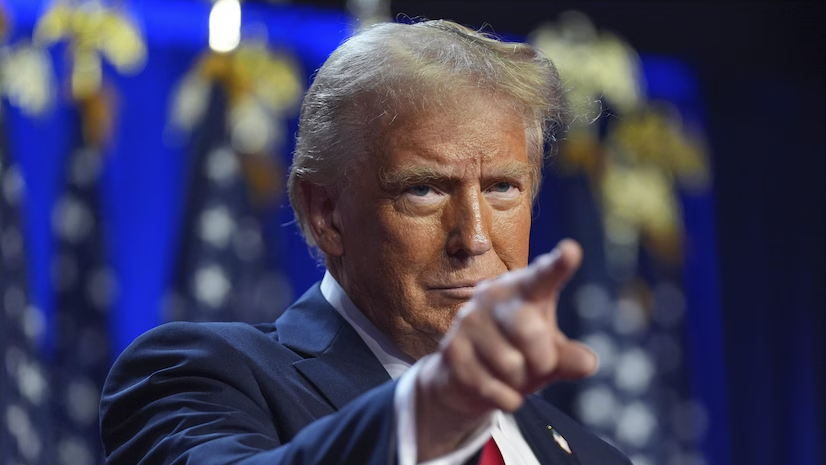
Donald Trump’s recent victory in the U.S. presidential elections marks a significant moment in American politics. Returning to the Oval Office after a four-year hiatus, Trump’s triumph underscores a series of political and economic narratives, none more prominent than the issue of inflation. The election served as a referendum not only on his leadership but also on the ability of the political system to address economic woes that touch every American household.
The Role of Inflation in Trump’s Victory
Inflation has been a hot-button issue in recent years, with rising prices of goods and services stretching household budgets. During his campaign, Trump tapped into this widespread discontent, portraying himself as the candidate who could bring economic relief. His rhetoric targeted the Biden administration’s handling of inflation, pointing to high energy costs, increased food prices, and soaring housing costs as failures of Democratic policies.
Trump’s economic narrative resonated particularly with middle-class and working-class voters, many of whom feel left behind by the broader economic recovery touted by Washington elites. By framing inflation as a consequence of “reckless government spending” and promising a return to “common-sense policies“, Trump mobilized a coalition of voters frustrated by the eroding purchasing power of their incomes.
The Politics of Blame
Inflation has always been a politically charged topic, and Trump’s campaign skillfully leveraged this to his advantage. He pointed fingers at the Federal Reserve, accusing it of mishandling monetary policy. Simultaneously, he criticized global supply chain dependencies, advocating for a “Made in America” approach to reduce reliance on foreign goods.
This strategy effectively shifted blame away from systemic economic challenges, focusing instead on policy choices that resonated with voters. Trump’s campaign ads frequently highlighted rising grocery and gas bills, juxtaposed with promises of economic stability under his administration.
Policy Proposals: Rhetoric vs. Reality
Trump’s promises to tackle inflation included a mix of familiar conservative economic policies: tax cuts, deregulation, and energy independence. His proposal to cut corporate taxes aimed to incentivize domestic production, while his pledge to expand fossil fuel production was marketed as a way to lower energy costs.
However, critics argue that such policies may not directly address the root causes of inflation. Economists have noted that factors like global supply chain disruptions, labor shortages, and geopolitical tensions also play significant roles. While Trump’s rhetoric appeals to immediate voter concerns, the efficacy of his proposals in curbing inflation remains uncertain.
A Divided Electorate
Trump’s victory also highlights the deep polarization within the United States. While his message on inflation resonated with many, it alienated others who viewed his approach as oversimplified and divisive. Younger voters, urban dwellers, and progressive factions remain skeptical of Trump’s economic policies, pointing to his first term, which saw significant tax cuts that disproportionately benefited the wealthy.
The divide between rural and urban voters was particularly stark in this election. Rural communities, where inflation’s impact is acutely felt, overwhelmingly supported Trump, while urban centers leaned toward Democratic candidates who proposed progressive economic reforms, such as universal healthcare and expanded social safety nets.
Inflation in a Global Context
The politics of inflation extend beyond U.S. borders. Rising prices have been a global phenomenon, driven by post-pandemic recovery, the Russia-Ukraine conflict, and climate-related disruptions. Trump’s victory raises questions about how the U.S. will navigate its role in the global economy. His promise to renegotiate trade deals and impose tariffs on imports may protect certain domestic industries but risks escalating tensions with key trading partners.
The Path Forward
As Trump prepares to assume office, he faces the daunting task of fulfilling his campaign promises while managing the complexities of a globalized economy. Inflation, while a potent campaign issue, is a multifaceted challenge that requires nuanced solutions.
For American households, the stakes are high. Persistent inflation erodes savings, reduces real income, and exacerbates economic inequality. Trump’s administration will need to balance short-term relief measures with long-term strategies to ensure sustainable growth.
The Federal Reserve’s role will also come under scrutiny. Trump’s previous clashes with the central bank suggest a potentially turbulent relationship ahead. Coordinated efforts between the administration and the Fed will be crucial to addressing inflation without triggering a recession.
Conclusion
Donald Trump’s victory underscores the enduring power of economic issues in shaping electoral outcomes. Inflation, a pocketbook issue for millions of Americans, became the fulcrum of his campaign, allowing him to connect with voters who feel disillusioned by the current system.
While Trump’s promises to combat inflation have garnered widespread support, their implementation will determine his success in delivering tangible results. As the United States embarks on this new chapter, the interplay between politics and economics will remain at the forefront of national discourse. The stakes are clear: addressing inflation effectively will not only define Trump’s presidency but also shape the future trajectory of the American economy.

